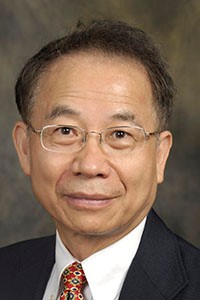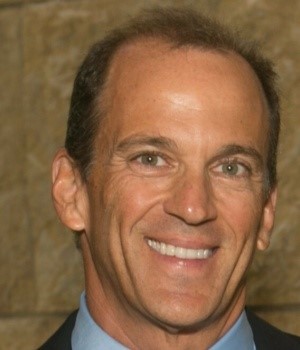SID-LA SYMPOSIUM 2025
DoubleTree by Hilton in Buena Park, California
February 28, 2025
New Directions in Display Technology
Presented by: Los Angeles Chapter “The Birthplace of SID"
The annual SID LA Chapter One-Day Conference returns with live presentations, a luncheon, and exhibits. The conference will cover crucial materials and display technologies for application for today and future. It’s an excellent opportunity to hear from display experts in person and learn about their specific areas. Also hear about display business and market trends. The six speakers will provide insights in their field and a chance to engage with the speakers directly at Q&A, breaks and at lunch. Additionally there is an opportunity to network and connect with some old friends.
Topics and Speakers
1. AR/VR and Near Eye Displays - Shin-Tson Wu, University of Central Florida
2. Micro-LED: A once-in-a-generation disruptive semiconductor - Nikhil Balram, CEO Mojo Vision
3. Display Market Outlook - Ross Young, VP, Counterpoint Research
4. Digital Signage- Samantha Phenix, Entrepreneur, AV Technologist
5. Quantum Dots - Jeff Yurek, VP Marketing Nanosys
6. Display Metrology for Displays and Cinema - Joe Kane, Joe Kane Productions
The presentations are followed by an extended Q&A time for interacting with the speakers and attendees, networking with your display colleagues, and opportunities to discuss your design and test challenges with exhibitors.
Registration desk opens at 7 am, Presentation from 8:20 am-4:30 pm, Lunch included.
Details of Presentations and Authors
AI-assisted AR glasses

Shin-Tson Wu, University of Central Florida
In past seminars Dr Wu has presented Near Eye Display (NED) design to standing-room-only crowds such as his “Compact and High-Optical-Efficiency AR/VR Displays.” He emphasized that light-engine and imaging optics jointly determine the performance of AR and VR displays in terms of power consumption, form factor, FoV, eye box, image quality, contrast ratio, and cost. In immersive VR headsets, high-dynamic-range (HDR) active-matrix liquid crystal displays (AMLCDs) and OLED-on-silicon (OLEDoS) are the current dominant technologies, whereas high-efficiency pancake lenses and beam-shaping films help to reduce the form factor and power consumption. In optical see-through AR displays, high brightness and ultracompact LCoS, OLEDoS, LED-on-silicon, microelectromechanical systems (MEMS), and laser beam scanners are strong contenders to offer a high ambient contrast ratio for outdoor applications.
Bio: Trustee Chair Professor at CREOL, The College of Optics and Photonics. Prior to joining UCF in 2001, he was with Hughes Research Laboratories (Malibu, California) where the first laser and liquid-crystal-on-silicon were invented. He received his Ph.D. in Physics from University of Southern California (Los Angeles) and BS in Physics from National Taiwan University (Taipei). His research interests at UCF focus on augmented reality and virtual reality, including light engines (mini-LEDs, micro-LEDs, and OLEDs), optical systems (lightguide, diffractive optics, and projection optics), and display materials (liquid crystals, quantum dots, and perovskites). Dr. Wu is a recipient of numerous industry awards. He has co-authored 7 books, 690 journal papers and 330 conference papers, and obtained 100 issued US patents. His publications have accumulated over 55,000 citations. Dr. Wu is an Academician of Academia Sinica, a Charter Fellow of the National Academy of Inventors, and one of the first six inductees to the Florida Inventors Hall of Fame. He is a Fellow of the IEEE, OSA, SID and SPIE. In the past, he served as the founding Editor-In-Chief of IEEE/OSA Journal of Display Technology, OSA Publications Council Chair and OSA Board of Directors, and SID Honors and Awards committee chair.
MicroLEDs

Nikil Balram, CEO Mojo Vision
At SID Display Week 2025, in his short course, “The MicroLED Disruption of the Display Industry,” Nikhil predicted that microLED technology, with its high brightness and advanced semiconductor manufacturing techniques, will disrupt the display market. He called it a once-in-a-generation disruption of the entire display market, extending beyond AR/VR into TVs, vehicles, and transparent displays. Balram highlighted key technical enablers, such as tiny (micron and submicron) LEDs with high efficiency, high yield, low-cost red, green, and blue (RGB) integration on the same substrate, a developing manufacturing ecosystem that leverages semiconductor technology, and exciting novel applications beyond traditional displays. He predicted that microLED will make classical science fiction concepts a reality, such as hand-held, table-top, and wall-size transparent displays; lightfield tables and walls for entertainment, productivity, and education; and form-fitted vehicular displays.
Bio: Dr. Nikhil Balram is CEO at Mojo Vision Inc. Previously, he was CEO of EyeWay Vision Inc. (EVI), a start-up developing immersive AR glasses. Prior to that he led the Display Group at Google, which was responsible for developing display systems for all Google consumer hardware, including AR and VR. Other past roles include CEO of Ricoh Innovations Corporation, VP and GM of Digital Entertainment BU at Marvell and CTO of the Display Group at National Semiconductor. He has received numerous awards including the Otto Schade Prize from the Society for Information Display (SID) and a Gold Stevie® Award for Executive of the Year in the Electronics category. Dr. Balram is a Fellow of the SID since 2012 and was Program Chair for Display Week 2019 and General Chair for Display Week 2021. Dr. Balram received his B.S., M.S. and Ph.D. in electrical engineering from Carnegie Mellon University
Display Market Outlook

Ross Young, VP, Counterpoint Research
Ross will address the latest market and technology trends in the display market. Are OLEDs ready to take over leadership from LCDs or will they remain a niche? Will LCDs with MiniLEDs take share from OLEDs outside of smartphones and tablets? Are MicroLEDs coming soon or will they remain a pipe dream? Why is automotive the fastest growing display market? Find out more by coming to my talk.
Bio: Founder of DisplaySearch and co-founder of Display Supply Chain Consultants. Also worked throughout the display supply chain at equipment companies, materials supplier, panel maker and TV brand. Organized the SID Business Conference the past 7 years and keynoted Display Week in 2023.
Display Technology Trends in Digital Signage

Sam Phenix, CEO/Founder, Phenix Consulting
Rapid changes in technology solutions for digital signage displays have created multiple emerging trends, which will impact the next two to three years. This paper will explore recent innovations for a range of new and existing display technologies including LCD, OLED, Direct View LED, Micro LED as well as some interesting novel approaches, highlighting the potential advantages for digital signage.
Bio: My 25+ year career has spanned engineering, business development, and corporate leadership. I have a history of driving display technology innovations across multiple, demanding vertical markets, while serving in leadership roles at companies such as Leyard, Planar, Intel, Dell, and Barco. Leaning on my expertise in display technology and specifically its application within the Audio Visual (AV) industry, I provide strategy consulting and advisory services for a range of clients. I have a proven track record of providing solid advice on product development, innovation and roadmaps, identifying and analyzing partnership and investment opportunities and facilitating collaborative technology projects and research.
Quantum Dots: Trends and Future Applications

Jeff Yurek, Vice President of Marketing, Nanosys
Quantum dot technology is evolving rapidly, expanding its impact across displays and beyond. This talk will provide a comprehensive update on the state of quantum dots in displays, covering key trends from CES, the market trajectory in TVs, and the growing adoption in IT displays. We’ll also explore the future of display technology, including advancements in quantum dot electroluminescence (QDEL) and QDCC for UV MicroLED. As a bonus, we’ll look at how quantum dots are making strides beyond displays, with emerging applications in agriculture, packaging, and pigments.
Bio: Yurek is a recognized industry expert on quantum dot technology and has authored numerous articles and presentations on the topic. He has played a key role in bringing quantum dots to market through partnerships with major consumer electronics brands. Before his tenure at Nanosys, Yurek worked as a creative professional, bringing his passion for storytelling and technology to a variety of projects in the music industry. He has a degree in Music from Berklee School of Music and an MBA from Suffolk University.
A new solution to which comes first, the chicken or the egg.

Joseph J. Kane, Jr., CEO and Video director for Joe Kane Productions
The future of electronic imaging is going to continue to be diverse in just the category of presenting storytelling content, let alone all the other uses for electronic displays. Each step in the evolution of imaging, from the mechanical color system of 1950 to the first workable standards in NTSC and PAL, to HDTV, to 3D to UHD and HDR has brought about a myriad of options in their implementations. In many cases it has been the ever-evolving display technologies that have driven the way we create content. Various requirements in deliverables for program content have reached a point where the program production community needs to find a way for a single deliverable to satisfy all of the needed versions of a program. The solution in the program production community is being called the single master concept. Dolby Vision and to some extent HDR10+ are moving in this direction. The ultimate single master system will become a driving force in easily accommodating whatever the display industry provides to us in the future. This is beneficial to both the program production community and to the display industry.
Bio: Mr. Kane specializes in the sciences of electronic imaging, accurately reproducing video on display devices. Those efforts have been the focus of his company, Joe Kane Productions, (JKP) since its founding in 1982. Much of the background for his position in this industry came from working in the video research labs of Eastman Kodak in Rochester, New York. In that capacity Mr. Kane worked on the fundamentals of displaying video, transferring film to video, high frame rate capture of video and optical recording of component video signals. In the mid-1980’s Mr. Kane joined and later became chair of the Society of Motion Picture and Television Engineers (SMPTE) T14.28 Working Group on Professional & Studio Monitors. He has been adamantly supporting the position that displays need to conform to system standards. Most importantly, he believes “It’s All About the Art”. Everything we do is aimed at better defining the canvas on which artists create content, expanding the capability of the canvas and bringing better picture quality to the viewer.